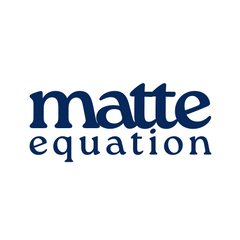This morning, I tried to run. Not a marathon. Not even a few miles. Just a small, hesitant jog through my neighbourhood. But within minutes, my chest tightened. My body protested. Every step felt foreign, like I was borrowing someone else’s lungs. I used to move easily, from meeting to meeting, plane to plane, until movement became something I only did in theory.
This morning, my body reminded me that it keeps score.
For years, I’ve been sprinting toward success while quietly falling out of step with myself. I built companies, brands and entire worlds — but I stopped building endurance. My body became a vessel for ambition, not a home. And now, I’m facing the cost: muscles that forgot, metabolism that slowed, energy that flickers.
Still, that run — that first, brutal, gasping run — was a beginning.
What Happens When You Start Again
The body is remarkably adaptive. It learns to push, but it also learns to pause.
When you live in constant overdrive, your nervous system eventually defaults to survival mode. You stop digesting properly, sleeping deeply, feeling fully. Years of stillness and strain blur together until effort feels impossible.
Starting again is uncomfortable. It should be. You’re asking your body to trust you after years of neglect. The first movement feels wrong, not because you’re broken, but because you’re recalibrating.
And so, The Equation Project begins here — at that uneasy intersection of burnout and biology.
This isn’t a “wellness challenge.” It’s an experiment in recovery. A framework for rebuilding from the inside out. A study in what happens when you strip away the noise and design health like you would design a brand: intentionally, intelligently and with a deep respect for longevity.
The Design of The Equation Project
Over the few months, I’ll be designing — and documenting — the five parts of this rebuild. Each one is a piece of the larger formula:
1. Designing the Goal
What does healing look like when it’s not tied to aesthetics or validation?
The first step isn’t a finish line — it’s a mission statement. In this phase, we’ll explore how to build a goal system rooted in sustainability: improved energy, better blood sugar control, deeper rest and a body that feels capable again.
2. Designing the Workout
Movement, for the burnt-out, has to be reimagined. It’s not punishment. It will always be rooted in partnership. We’ll explore foundational fitness: resistance training, low-impact cardio, and functional movement designed to awaken the body slowly. Think less “transformation” and more “reconnection.”
3. Designing the Diet
Food as function. Food as repair. We’ll rethink the word “diet” as daily architecture — designing a rhythm that supports stable glucose, hormonal balance and real-world energy. This goes beyond restriction. We're going all in with alignment.
4. Designing the Recovery
Rest is not a reward; it’s a requirement. This phase looks at how recovery shapes performance — from sleep hygiene to skincare rituals, and how restoration itself can be the most productive act of all.
5. Designing the Reset
Every plan needs a pause. The Reset is about ritual: checking in, reflecting, rebalancing.
It’s the recurring maintenance of both mind and body — a practice to make sure the system stays honest and adaptive.
Why This Matters
I’m not writing this to impress you with discipline. I’m writing this to remind you — and myself — that it’s possible to start again, even after years of disconnection.
We talk so much about building businesses, brands, and wealth. But who teaches us how to rebuild ourselves? That’s the work of The Equation Project.
This is where we begin again.
Try this favourite from Matt's Rituals!
Skout Organic is plant-based snacking that raises the bar with three different flavours! Shop now and use our discount code CELESTIAL to get 20% off!


